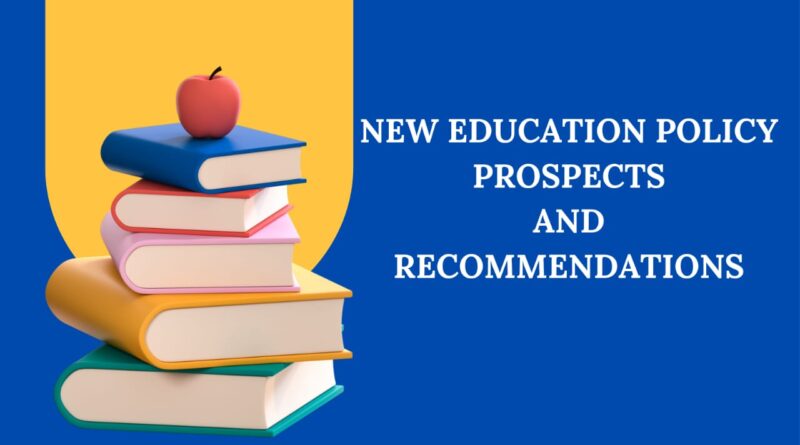Exploring the Prospects and Recommendations of the New Education Policy
Introduction:
The implementation of a new education policy often signifies a pivotal moment for a nation’s educational landscape. In this article, we will delve into the prospects and recommendations surrounding the recently introduced education policy, analyzing its potential impact on students, teachers, and the overall educational system.
Prospects:
Holistic Development: The new education policy emphasizes a shift towards holistic development, focusing not only on academic excellence but also on the overall well-being of students. This approach aims to nurture critical thinking, creativity, and life skills, preparing students for the challenges of the modern world.
Flexibility in Learning: The policy encourages flexibility in learning pathways, allowing students to choose from a diverse range of subjects and explore their interests. This adaptability aims to cater to individual learning styles and foster a more inclusive educational environment.
Technology Integration: Embracing the digital era, the policy promotes the integration of technology in education. This move holds the potential to enhance accessibility, engage students through interactive learning methods, and prepare them for a technology-driven future.
Vocational Training: A notable aspect of the new policy is its emphasis on vocational training. By incorporating practical skills into the curriculum, the education system aims to produce graduates who are not only academically proficient but also equipped for real-world challenges, thus bridging the gap between education and employment.
Recommendations:
Teacher Training and Support: Adequate training and support for teachers are crucial for the successful implementation of the new policy. Professional development programs should be designed to equip educators with the skills required to effectively implement the changes in teaching methodologies and assessment strategies.
Infrastructure Investment: To support the integration of technology and provide a conducive learning environment, there is a need for significant investment in educational infrastructure. This includes ensuring access to digital resources, upgrading classrooms, and addressing issues related to sanitation and safety in schools.
Regular Evaluation and Feedback: Continuous evaluation of the policy’s impact is essential. Establishing mechanisms for feedback from students, teachers, and parents can help identify areas that require adjustment or improvement, ensuring the policy remains dynamic and responsive to evolving educational needs.
Community Engagement: Involving parents, local communities, and other stakeholders in the educational process is vital. Building partnerships can enhance the support system for students and contribute to the overall success of the new education policy.
As we navigate the implementation of the new education policy, it is imperative to remain vigilant about its impact on various stakeholders. By addressing challenges and embracing the recommended measures, we can strive towards a more comprehensive, flexible, and inclusive education system that empowers students for the demands of the 21st century.





